How to properly transplant zamioculcas?

Indoor flowers play a huge role in design, as they are an integral part of any interior. Despite the fact that now there are many types of ornamental plants, most gardeners prefer zamiokulkas, since this flower has an unusual shape and brightness of foliage. In order for him to give a beautiful inflorescence at home, you should try hard, providing him with proper care, an important role in which transplantation plays.

Peculiarities
Zamioculcas is a popular houseplant that is characterized by dense, succulent foliage and ease of maintenance. The only obstacle to growing it may be a transplant, it must be done correctly and with strict frequency. This flower is also called the "dollar tree" - according to old beliefs, the plant can attract well-being and prosperity to the house.
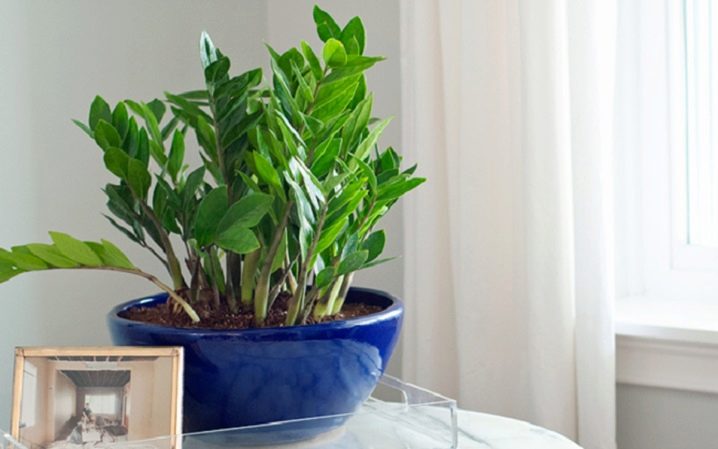
The decorative flower of this species is classified as a slow-growing crop., since with proper home care, it grows on average by only a few centimeters per year, while its maximum height does not exceed 1 m.Like all representatives of the succulent family, zamioculcas has a developed root system. Therefore, the roots of the "money tree" grow rapidly and fill the entire space of the pot, requiring timely transplantation.
Experts recommend replanting such a plant 3 weeks after purchase, since this time is enough for it to acclimatize.
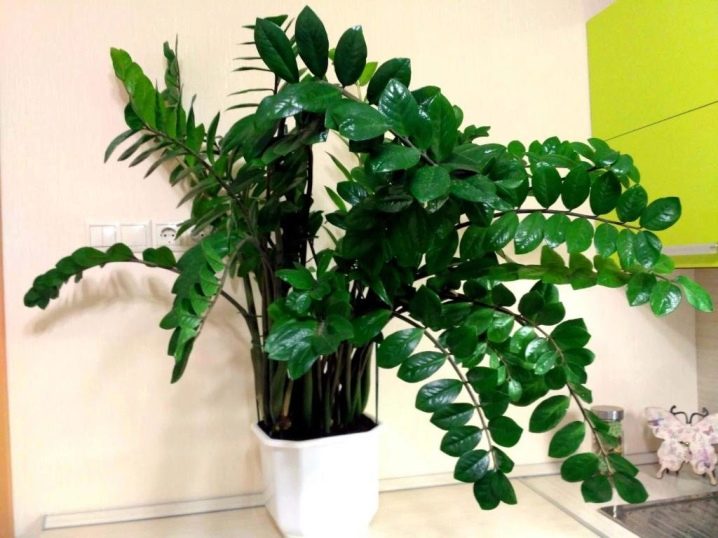
Flowers that grow in natural conditions are not afraid of the scorching rays of the sun and drought, thanks to which they perfectly adapt to any climatic conditions. The main feature of zamiokulkas is a clearly pronounced decorative appearance and an interesting structure, the flower does not branch. That part of the "dollar tree", which is considered to be the stem, is a complex leaf, their formation begins directly from the tuber.
When growing a plant, you need to pay special attention to the lower part, since it plays a huge role in growth - it accumulates moisture.

The leaves of the flower are large, they are feathery, erect, and covered with a light waxy bloom. The foliage is placed on thick stalks that form immediately at the base. Outwardly, the decorative flower resembles a small ear of corn, encircled in a circle with a veil of a pale green hue. As for the longevity of the plant, it usually grows at home for no more than 10 years, after which it needs to look for a replacement.
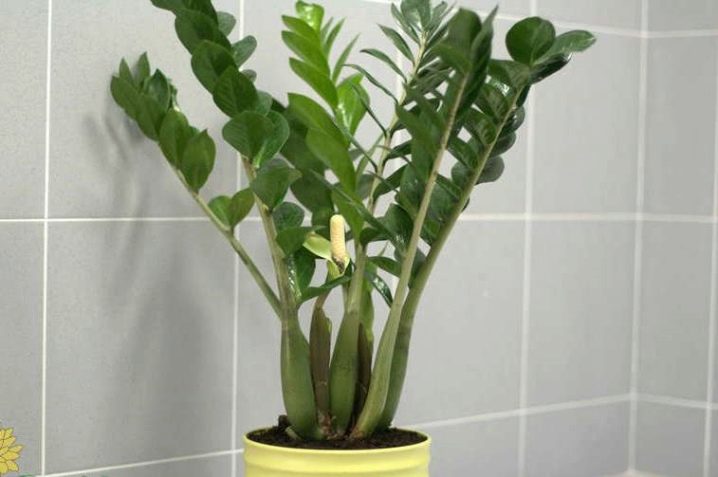
It is also worth noting that zamioculcas is classified as a poisonous plant species, any part of it can pose a danger to life. Therefore, in order to protect all family members and animals from poisoning, it is recommended to place the flower in places where it is difficult to reach.
You should be especially careful with the juice of the flower; care must be taken in such a way that the poisonous liquid does not get into the eyes.

Transplant time and frequency
A particular difficulty in caring for the "dollar tree" is a transplant, which cannot be carried out immediately after the purchase of the plant.The purchased indoor flower must be placed in a good place with moderate lighting and given some time to acclimatize.
Experts recommend placing it in "quarantine", placing it in rooms where there are no other decorative flowers.
During acclimatization, it is important to monitor the condition of the flower, and water as the soil dries up. In 3-4 weeks after purchase, zamioculcas can be transplanted.
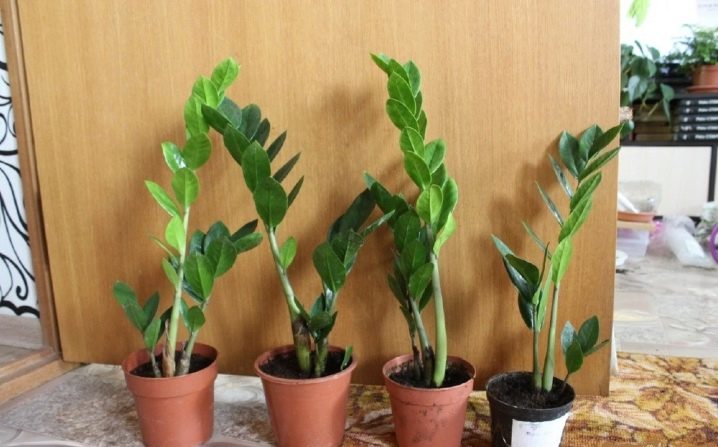
It is best to transplant in winter and spring, choosing the period from late February to early March. If you assign such an important procedure for another season (autumn or summer), then the plant may take root badly and get sick. In this case, it is advisable to transplant all young flowers into large pots every year, while "mature" plants require transplantation less often, and it is carried out as the container is filled with roots.

What is necessary?
Before transplanting zamiokulkas, it is important not only to give it some time to get used to the new climatic conditions (wait until it grows green mass), but also to choose a suitable container and soil. The planting pot must be matched in size and material. The rhizomes of plants develop rapidly, and they will be able to "break" a pot made of thin and fragile plastic with their strength. This also applies to beautiful pots made of glass or decorative ceramics.
Therefore, it is best to give preference to unglazed clay containers, since they have increased strength, and the porous surface of the clay contributes to the rapid intake and release of moisture.

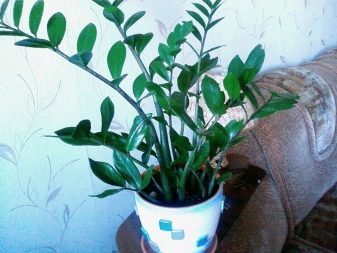
As for the size, it is advisable to purchase a larger pot for transplanting a flower. Its diameter is selected in accordance with the dimensions of the planted tubers. In addition, it should be borne in mind that the rhizomes of the plant are accustomed in natural nature to extract moisture and nutrients not only in easily accessible places, but also at depth. If the "money tree" is initially planted in a small pot, then problems may arise during subsequent transplants.
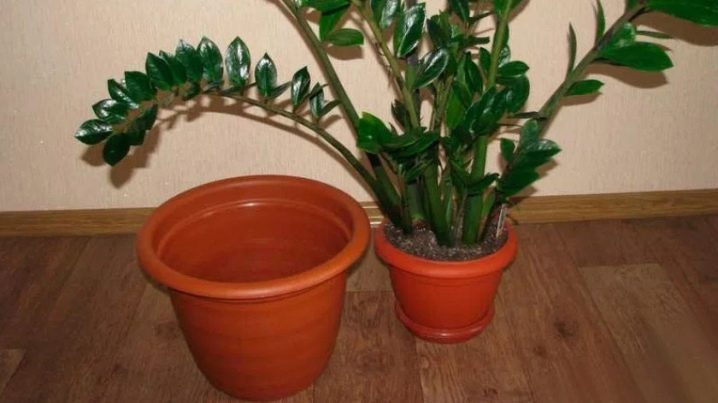
It is difficult to remove the roots that have grown at a depth, so it is important to foresee this moment in advance, and fill the container 1/4 with large expanded clay. If you transplant a flower into a huge pot, then its growth and flowering may slow down, but only until the rhizomes cover most of the soil. An important role is played by the shape of the container into which it is planned to transplant the plant.
Low and wide pots are best for this type of decorative flower.

In addition to the pot, good soil should be picked up before planting zamiokulkas. The "dollar tree" usually grows in the wild on sandy and rocky soils with an admixture of humus. At home, it is recommended for him to independently prepare an earthen mixture consisting of garden soil, peat and humus. In such a soil, the flower will be able to quickly build up its aerial part and receive the required amount of moisture and minerals.
However, it is necessary to correctly observe the proportions of the components during the preparation of the earthen mixture, otherwise it will turn out to be saturated, prone to moisture accumulation, which will certainly lead to decay of the roots.
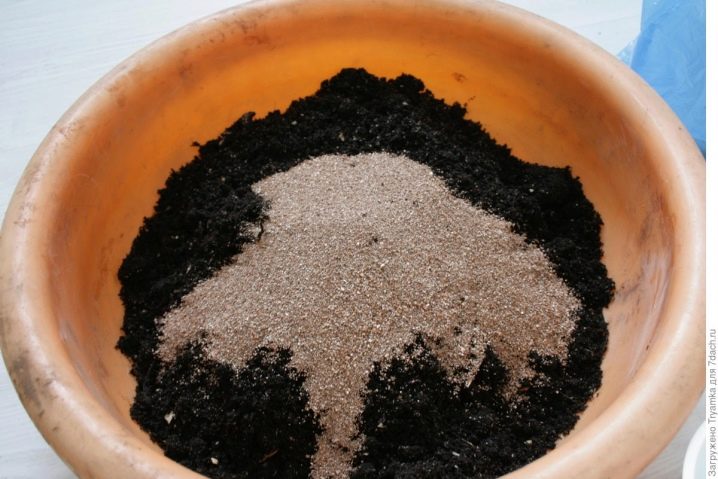
The soil for transplanting should be not only nutritious, but also moisture-permeable, with a loose structure. If the gardener does not have experience in preparing the planting substrate on his own, then it is best to purchase it ready-made. For this, the stores sell soil designed for this type of plant. In addition, perlite, washed medium-grained river sand, expanded clay or granite chips will have to be added to the purchased universal mixture by 1/3 of its total volume, fragments of charcoal are also suitable.


How to transplant?
After the zamiokulkas is purchased, acclimatized in new conditions for him, and all the work on preparation for transplantation is completed, you can safely proceed to the direct process of planting a flower in another pot.
Experienced experts advise carrying out the transshipment of the plant, since this is the easiest method of transplanting, in which the risk of damage to the roots is eliminated, and the flower after it continues its active growth without loss.
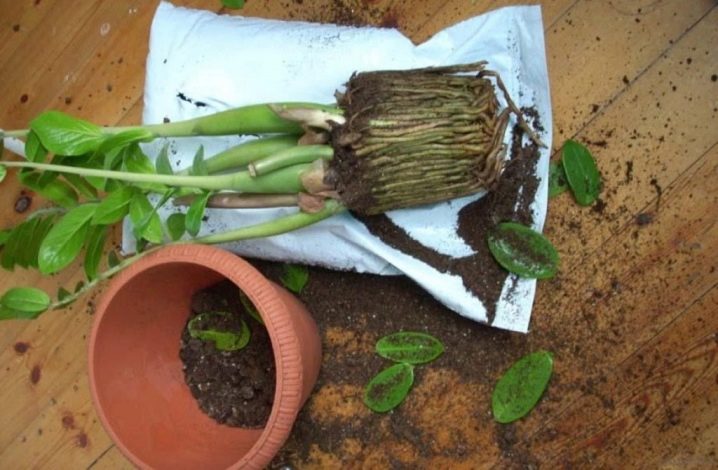
Before replanting a large bush at a "mature" age, you should thoroughly clean the rhizome from the remnants of the old soil. If the "dollar tree" consists of tubers with stems, then it should be divided into several independent seedlings, each placed in a separate pot.
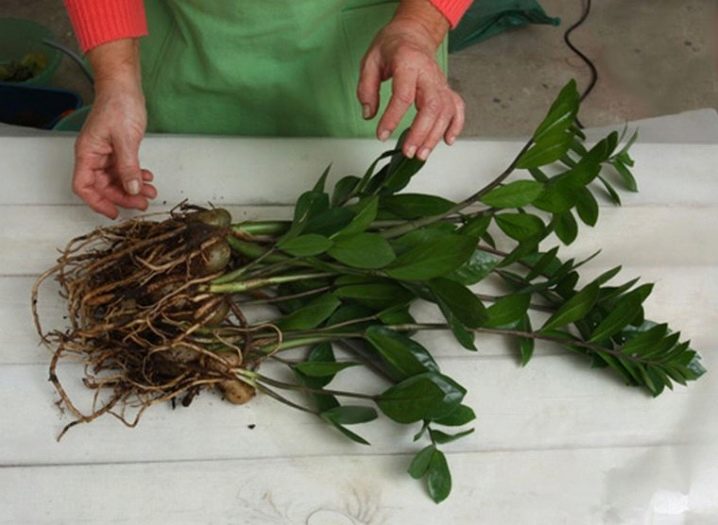
The process of transplanting a flower should take place step by step and correctly. If this is done by a florist for the first time, then a simple instruction will come to the rescue.
- First of all, a seat is being prepared. A small layer of expanded clay is poured into the bottom of the previously selected container. A moist layer of earth should be laid on top, which would completely cover the drainage, while there should also be room for free placement of roots.
- After that, the seedling is placed with roots in the soil and covered so that the upper parts of the roots remain slightly on the surface. Then the soil is carefully compacted, which will further contribute to the conservation of moisture.
- Upon completion, the transplanted flower is placed in a place protected from the penetration of bright rays of the sun and watched for its engraftment. If everything was done correctly, then after a few weeks the zamiokulkas will begin to be covered with new foliage, and will delight with its decorative appearance.
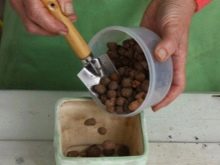
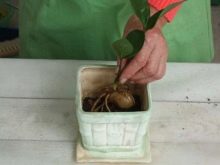
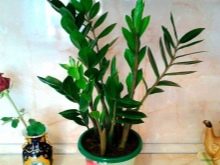
Possible problems
Despite the fact that the "dollar tree" is unpretentious to care for, with the wrong transplant, various problems with its growth may arise. If the flower did not survive the transplantation well, then it will manifest itself as follows.
Loss of foliage
As a rule, the reason for this is excessive soil moisture or lack of timely watering. The plant loses leaves after transplanting if it was planted in soil containing high levels of peat and clay. Therefore, it is important to monitor the condition of the soil and not let it dry out.
As for the non-compliance of the soil with the norms, in this case, the flower should be immediately transplanted into a substrate more suitable for its growth.

Does not grow
This usually happens when the plant is planted in a pot that is too large, and until its root system has "mastered" the entire space of the container, the leaves and stem of the flower will not grow. To avoid this problem, transplant into a container of the correct size. The diameter of the new pot should be only 4 cm larger than the previous one.
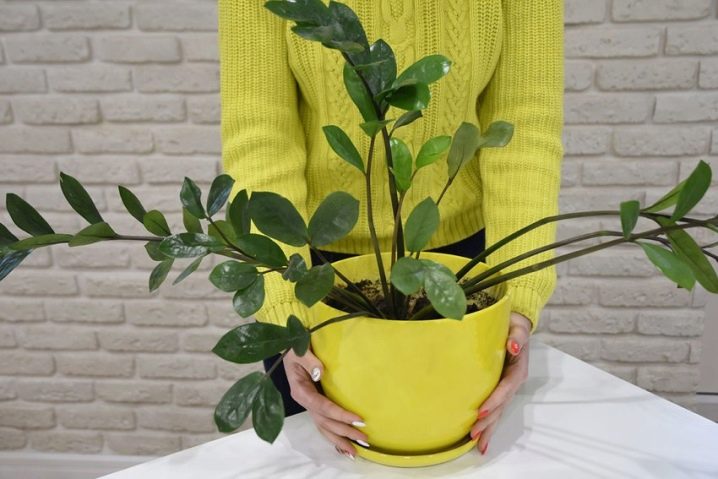
In addition, branches may break during transplanting, as they are very juicy. If this happens, then you do not need to be upset immediately. A broken branch can be easily rooted and planted, and the wound on the flower can be sprinkled with crushed activated carbon.
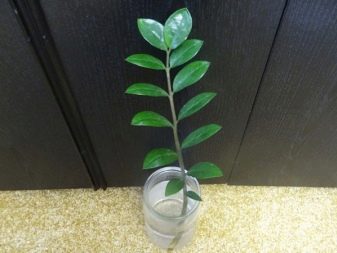

Follow-up care
With the correct cultivation of the "dollar tree" it is very important not only to make timely transplantation, but also to provide the plant with proper care. In order for the flower to quickly grow stronger and take root, it will take a lot of effort. You also need to constantly monitor the presence of insects and the manifestation of diseases. If this is noticed, then you should immediately treat the flower with certain preparations. In addition, to accelerate growth, zamioculcas should be placed in a warm and dark place, and when it takes root, a permanent and comfortable place is selected for it.

When caring for the "money tree", it is also important to consider the following indicators.
Lighting
An indoor flower is not particularly picky about the level of lighting and can grow well both in a darkened and well-lit place. As a rule, mature plants are placed in the shade when they want to slow down their growth.
It is not recommended to expose the flowerpot in the hot season on the windowsills, which are located to the south.
If there are no other accommodation options, then the "money tree" will need to provide a protective shelter from the scorching sun.

Indoor air temperature and humidity
Zamioculcas loves warmth, therefore, in summer for normal growth, it needs an air temperature of at least +30 degrees, while in winter it can drop to +15. Since in nature the flower lives in arid places, the level of humidity in the room is not important for it. This is the only indoor flower that feels comfortable even with the heating devices turned on.
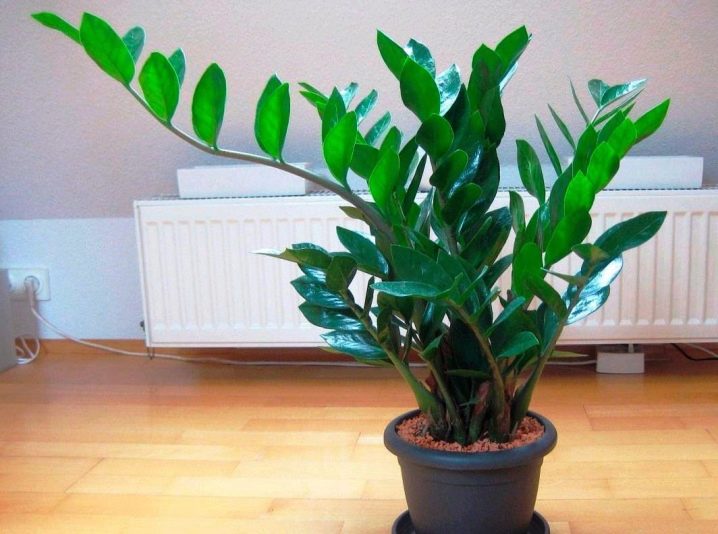
Watering
This procedure is best carried out in the form of spraying from a spray bottle. This will help remove dust from the leaves and provide moisture at the same time. In the hot season, the dollar tree should be watered more often, but not very abundantly. The water should be taken at room temperature. The need for watering is determined by the state of the topsoil - if it has dried out by 2 cm, then it is necessary to start "water procedures". In winter, on the contrary, watering is reduced, and is carried out only when the soil is dry to a depth of half the capacity.
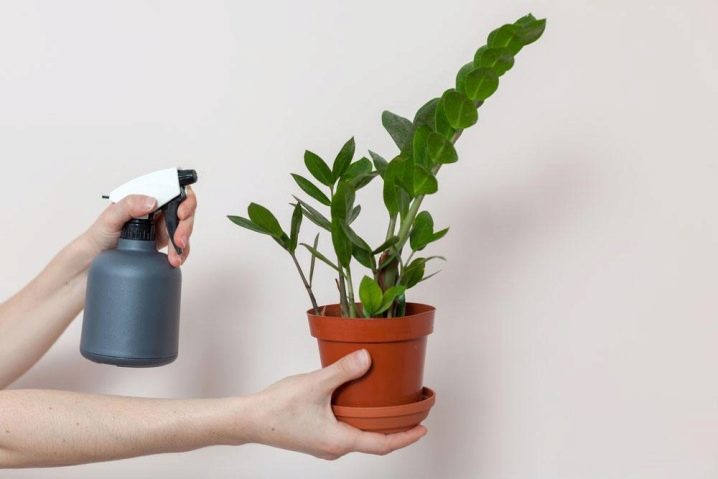
Fertilizer
Like all other decorative flowers, zamioculcas needs periodic feeding. The plant is able to accumulate water for a long time, but it consumes nutrients very quickly. To ensure the normal development of the flower, experts recommend fertilizing in spring and summer, since it is during this period that active vegetation takes place. As a top dressing, special mineral mixtures are usually used, sold ready-made. They are introduced strictly according to the instructions, observing a certain dosage.
It is best to fertilize the plant once a month; frequent feeding can lead to its death.
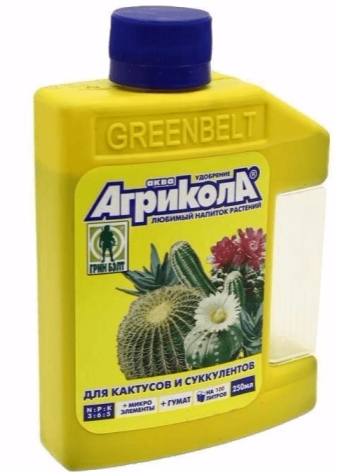

If all of the above conditions are met, then the "dollar tree" will surely grow healthy, beautiful, and will not lose its decorative qualities.
You can get acquainted with the technology of zamiokulkas transplantation in the following video.























































The comment was sent successfully.